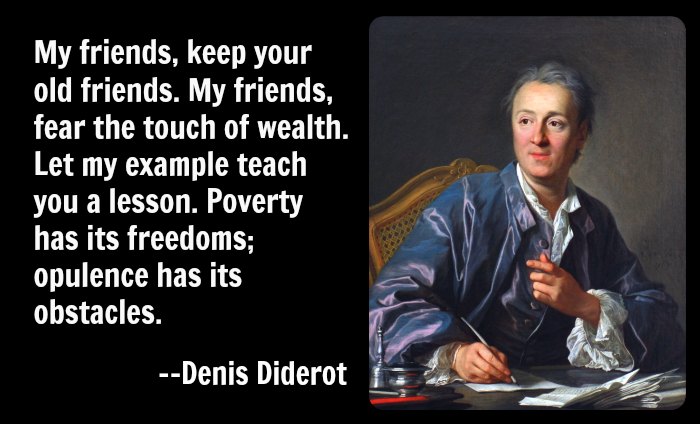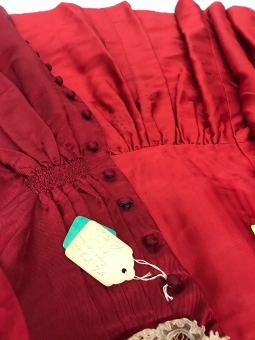
This week’s readings in material culture encouraged me to think further about the different ways I can continue to write a comprehensive history of my object. Though methodology is an important starting point to writing any history, it was helpful to read Dannehl’s article, “Object Biographies: From Production to Consumption.” In this piece, Dannehl explores the various methods that can be taken in order to write a biography for a physical object. The overall goal of an object biography is to ask questions about the life cycle of an object, through its various stages and turning points from production to consumption. A typical life cycle of an object consists of the following steps . . .
- Raw Material
- Manufacturing
- Transportation
- Distribution
- Use
- Reuse
- Maintenance
- Recycling
- Final Disposal
Though all of these steps may not be useful or feasible to explore, examining objects in this way allows room for the contextual layers in which the object lived. Limiting and restricting the historical context of objects is a common problem that can occur when we try to categorize objects that had multiple functions and associations. This is often seen with objects displayed in museum settings, where objects are selected removed from their original contexts and presented in a certain manner. These suggestions from the article have been useful for me as I begin to write the history of the woman’s sport suit from 1919. Looking at the suit’s life cycle from production to consumption has opened a whole new lens in which I can approach the history of this object, resulting in new avenues for historical inquiry.
 The next article I read was “Object Analysis of the Giant Pumpkin,” by Cindy Ott. In this piece, Ott examines the American fascination with the Atlantic Giant Pumpkin. Though Ott is not tracing the biography of one specific giant pumpkin, she does examine the pumpkin as a physical object and its role in history. Something about pumpkins makes us happy and Ott concludes that it is the American desire to perpetuate and celebrate a rural and agricultural identity. She does this by examining the history of pumpkins in America through botany, economics, art, literature, etc. This interdisciplinary approach allows us to see how historical and cultural factors influenced the physical form, definitions, and meanings of pumpkins over time. Though studying the history of pumpkins may seem a bit silly, it is actually very helpful in understanding how material culture can benefit the study of history and vice-versa. It also demonstrates how an interdisciplinary approach to material culture can be helpful in creating a more complete history of an object.
The next article I read was “Object Analysis of the Giant Pumpkin,” by Cindy Ott. In this piece, Ott examines the American fascination with the Atlantic Giant Pumpkin. Though Ott is not tracing the biography of one specific giant pumpkin, she does examine the pumpkin as a physical object and its role in history. Something about pumpkins makes us happy and Ott concludes that it is the American desire to perpetuate and celebrate a rural and agricultural identity. She does this by examining the history of pumpkins in America through botany, economics, art, literature, etc. This interdisciplinary approach allows us to see how historical and cultural factors influenced the physical form, definitions, and meanings of pumpkins over time. Though studying the history of pumpkins may seem a bit silly, it is actually very helpful in understanding how material culture can benefit the study of history and vice-versa. It also demonstrates how an interdisciplinary approach to material culture can be helpful in creating a more complete history of an object.
Finally, I read came from the short essay, “Regrets on Departing with my Old Dressing Gown” by French philosopher Denis Diderot. In this famous piece, Diderot says he was gifted with a beautiful scarlet dressing gown in which he was pleased with. However, satisfaction with the new gown led to his dissatisfaction with old objects that now seemed dingy. As a result, he started replacing the old things one at a time, replacing them with new and more beautiful things, leading him into debt. This social phenomenon, known as the Diderot effect, describes the process of consumerism which can have negative effects. This perhaps explains why we oftentimes buy stuff we don’t need. This is also helpful to me in studying the history of my sports suit as it encourages me to think about consumerism in a different light. Though I am not making any claims about the Diderot effect and my object’s owner, it is interesting to entertain the idea.






 In his chapter titled “Why We Need Things,” Mihaly Csikszentmihalyi outlines the meanings and relationships that humans imbue objects with when they choose to own or keep them. Whether “demonstrating the owner’s power,” “reveal[ing] the continuity of the self through time,” or “giv[ing] concrete evidence of one’s place in a social network,” material things contain great symbolic weight for humans as social creatures (23). In light of the readings on clothing and fashion for this week’s class, I keep thinking about how clothes perform a specific function that mixes all of these functions: clothes and fashion operate as a form of rhetoric. In Jennifer Price’s chapter on the controversy over bird hats, she describes how upper-class women spearheaded the movement against bird hats as a product of their understandings of a woman’s domestic moral power and their perceived status as the aesthetic and moralistic vanguard of polite society. As the arbiters of proper domestic and natural morality and stewardship, women used their rejection of bird hats to signify their place in a community of socially-minded women who could exert new avenues of force and power in social clubs. Similarly, Leslie Shannon Miller describes in her article on corsets how the constrictive nature of the garment inculcated an “aura of high morality and youthful discipline that went hand in hand with the message of physical youth,” creating a way for women to sartorially demonstrate their virtue (137). For both Price and Miller, women understood that clothing “was always meant to be seen and interpreted by others,” making fashion a non-verbal rhetorical strategy where women signaled their values, power, and status to themselves and society (L. Miller, 143).
In his chapter titled “Why We Need Things,” Mihaly Csikszentmihalyi outlines the meanings and relationships that humans imbue objects with when they choose to own or keep them. Whether “demonstrating the owner’s power,” “reveal[ing] the continuity of the self through time,” or “giv[ing] concrete evidence of one’s place in a social network,” material things contain great symbolic weight for humans as social creatures (23). In light of the readings on clothing and fashion for this week’s class, I keep thinking about how clothes perform a specific function that mixes all of these functions: clothes and fashion operate as a form of rhetoric. In Jennifer Price’s chapter on the controversy over bird hats, she describes how upper-class women spearheaded the movement against bird hats as a product of their understandings of a woman’s domestic moral power and their perceived status as the aesthetic and moralistic vanguard of polite society. As the arbiters of proper domestic and natural morality and stewardship, women used their rejection of bird hats to signify their place in a community of socially-minded women who could exert new avenues of force and power in social clubs. Similarly, Leslie Shannon Miller describes in her article on corsets how the constrictive nature of the garment inculcated an “aura of high morality and youthful discipline that went hand in hand with the message of physical youth,” creating a way for women to sartorially demonstrate their virtue (137). For both Price and Miller, women understood that clothing “was always meant to be seen and interpreted by others,” making fashion a non-verbal rhetorical strategy where women signaled their values, power, and status to themselves and society (L. Miller, 143).